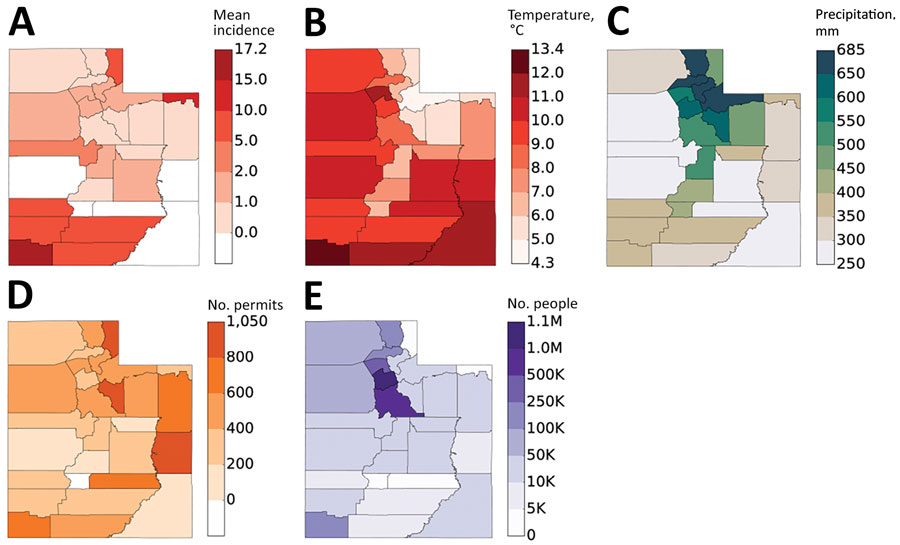Volume 27, Number 9—September 2021
Synopsis
Epidemiology, Clinical Features, and Outcomes of Coccidioidomycosis, Utah, 2006–2015
Figure 3

Figure 3. Comparison of mean coccidioidomycosis incidence (per 100,000 population per year) by county, Utah, 2009–2015 (A), with mean annual air temperature (B); precipitation, mm (C); construction permits per 100,000 population (D); and population (E). K, thousand; M, million.
Page created: June 09, 2021
Page updated: August 17, 2021
Page reviewed: August 17, 2021
The conclusions, findings, and opinions expressed by authors contributing to this journal do not necessarily reflect the official position of the U.S. Department of Health and Human Services, the Public Health Service, the Centers for Disease Control and Prevention, or the authors' affiliated institutions. Use of trade names is for identification only and does not imply endorsement by any of the groups named above.